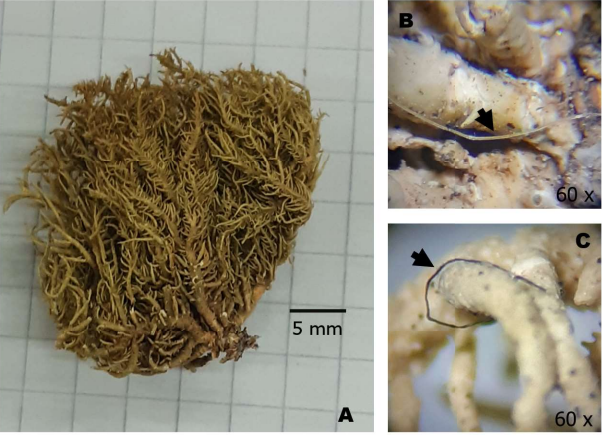Micro and mesoplastics derived from “stone tea” infusion
Keywords:
Mesoplastics, Microplastics, Usnea amblyoclada, Infusion, Stone teaAbstract
The presence of plastic meso- and micro-particles is almost ubiquitous in products for human consumption, including herbal teas. Some lichen species are frequently marketed for the preparation of herbal teas. However, there are no studies on the content of plastic particles in herbal teas or within (accumulation) of lichens used to make herbal teas. In the present work, we recorded and quantified, for the first time, the content of mesoand microplastic particles in the infusions and thalli (accumulated) of Usnea amblyoclada, a lichen used in the preparation of “stone tea”. The thalli used came from three herbalist’s shops in Greater Buenos Aires (GBA, Buenos Aires, Argentina). We made three infusions of 250 ml per herbalist’s shop. Following recommendations, each infusion was brought to 100ºC (for 1 minute). The infusions and the digested liquid material (hydrogen peroxide method) were filtered through a 1 μm filter (pore). The number, length and shape of plastic particles were recorded (a total of 90 particles were recorded). An average of 3.56 cumulative plastic particles and 6.44 in infusions were recorded. The polymers identified were: nylon 6, polyester and polypropylene. Plastic particles recorded an average length of 3822.76 μm; with a higher frequency of translucent (colourless) particles. Here we record for the first time the ability of U. amblyoclada to accumulate plastic particles. A frequent consumer of stone tea implies an intake of more than 1000 plastic particles per year. Further studies on the collection and storage processes of stone tea should be carried out.

Downloads
Published
Issue
Section
License

This work is licensed under a Creative Commons Attribution-NonCommercial 4.0 International License.

